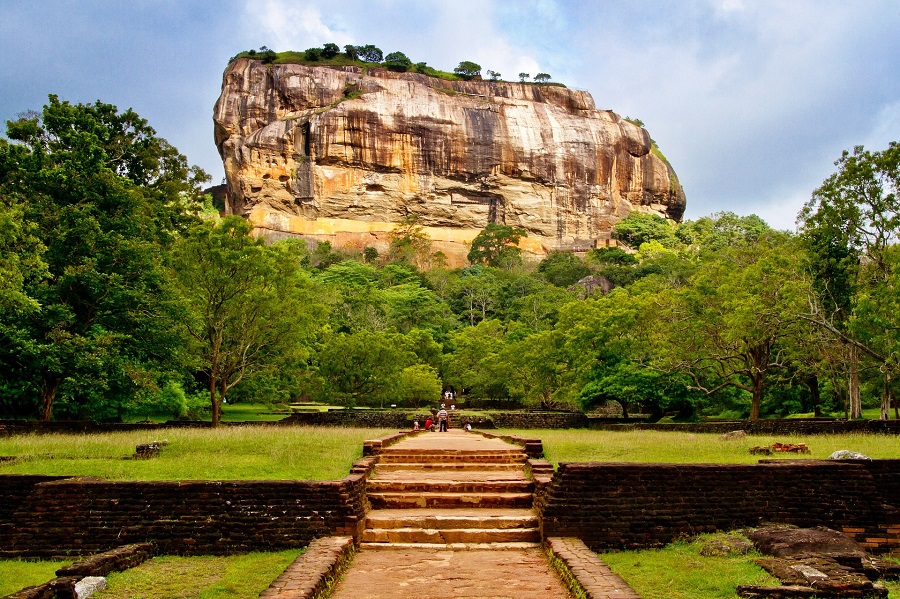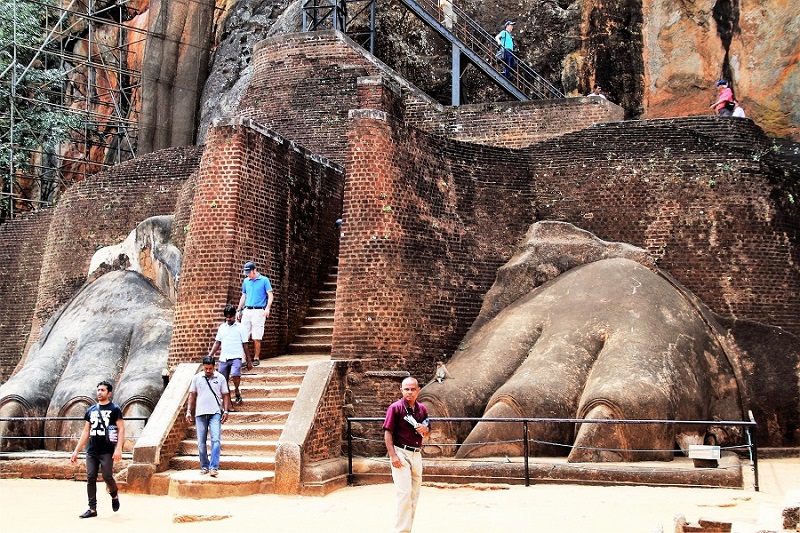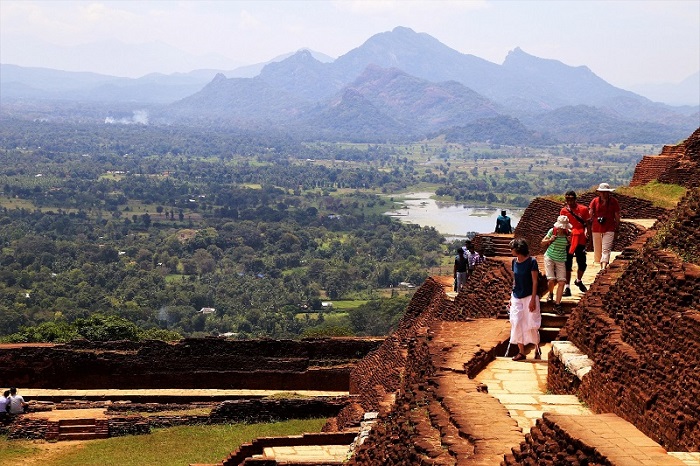Sri Lanka is one of the wonderful countries with a great history and Sigiriya is one of the most historical sites of Sri Lanka. This beautiful monument is actually an ancient rock fortress, which is located in the northern Matale District near the town of Dambulla in the Central Province, Sri Lanka. It is also known as Sinhagiri (Lion Rock). This historical monument is dominated by a massive column of rock nearly 200 metres high. It was designed in the form of a huge stone lion, whose feet have survived up to today but the upper parts of the body were destroyed. The name of this place is derived from this structure - Sīhāgiri, the Lion Rock. It was used as a Buddhist monastery until the 14th century. Sigiriya is one of the best preserved examples of ancient urban planning, and listed as a UNESCO World Heritage Site.
It is believed that this site was chosen by King Kasyapa for his new capital and he built his palace on the top of this rock and decorated its sides with colourful frescoes, during the 5th century. The Sigiriya site now contains the ruins of an upper palace located on the flat top of the rock, a mid-level terrace that includes the Lion Gate and the mirror wall with its frescoes, the lower palaces located behind the lavish lower gardens, and moats and ramparts which protected the citadel. There was a sculpted lion's head above the legs and paws flanking the entrance, but the head collapsed years ago.
There are five gates were placed at entrances. It is believed that the more elaborate western gate is reserved for the royals. According to John Still (John Still was a British archaeologist and author, known for his discoveries at Sigiriya and his book "The Jungle Tide"), "The whole face of the hill appears to have been a gigantic picture gallery, the largest picture in the world perhaps".
The paintings would have covered most of the western face of the rock, an area 140 metres long and 40 metres high. In these pictures 500 ladies have references in graffiti and much more frescoes, different from those on the rock face can be seen elsewhere. One of the most striking features of Sigiriya is its Mirror wall. This wall was so highly polished that the king could see himself whilst he walked alongside it. The mirror wall is now covered with inscriptions and poems written by the visitors of Sigiriya. The most ancient inscriptions are dated from the 8th century. But now further writing on the mirror wall has been strictly prohibited for the protection of the old writings.
The site was both a palace and a fortress. Due to its ancient palace and fortress complex, it is accepted by locals as the Eighth Wonder of the World. This historic site is responsible for attracting thousands of visitors every year. This is probably the most visited tourist destination in Sri Lanka.
It is believed that this site was chosen by King Kasyapa for his new capital and he built his palace on the top of this rock and decorated its sides with colourful frescoes, during the 5th century. The Sigiriya site now contains the ruins of an upper palace located on the flat top of the rock, a mid-level terrace that includes the Lion Gate and the mirror wall with its frescoes, the lower palaces located behind the lavish lower gardens, and moats and ramparts which protected the citadel. There was a sculpted lion's head above the legs and paws flanking the entrance, but the head collapsed years ago.
There are five gates were placed at entrances. It is believed that the more elaborate western gate is reserved for the royals. According to John Still (John Still was a British archaeologist and author, known for his discoveries at Sigiriya and his book "The Jungle Tide"), "The whole face of the hill appears to have been a gigantic picture gallery, the largest picture in the world perhaps".
The paintings would have covered most of the western face of the rock, an area 140 metres long and 40 metres high. In these pictures 500 ladies have references in graffiti and much more frescoes, different from those on the rock face can be seen elsewhere. One of the most striking features of Sigiriya is its Mirror wall. This wall was so highly polished that the king could see himself whilst he walked alongside it. The mirror wall is now covered with inscriptions and poems written by the visitors of Sigiriya. The most ancient inscriptions are dated from the 8th century. But now further writing on the mirror wall has been strictly prohibited for the protection of the old writings.
The site was both a palace and a fortress. Due to its ancient palace and fortress complex, it is accepted by locals as the Eighth Wonder of the World. This historic site is responsible for attracting thousands of visitors every year. This is probably the most visited tourist destination in Sri Lanka.
















0 comments:
Post a Comment